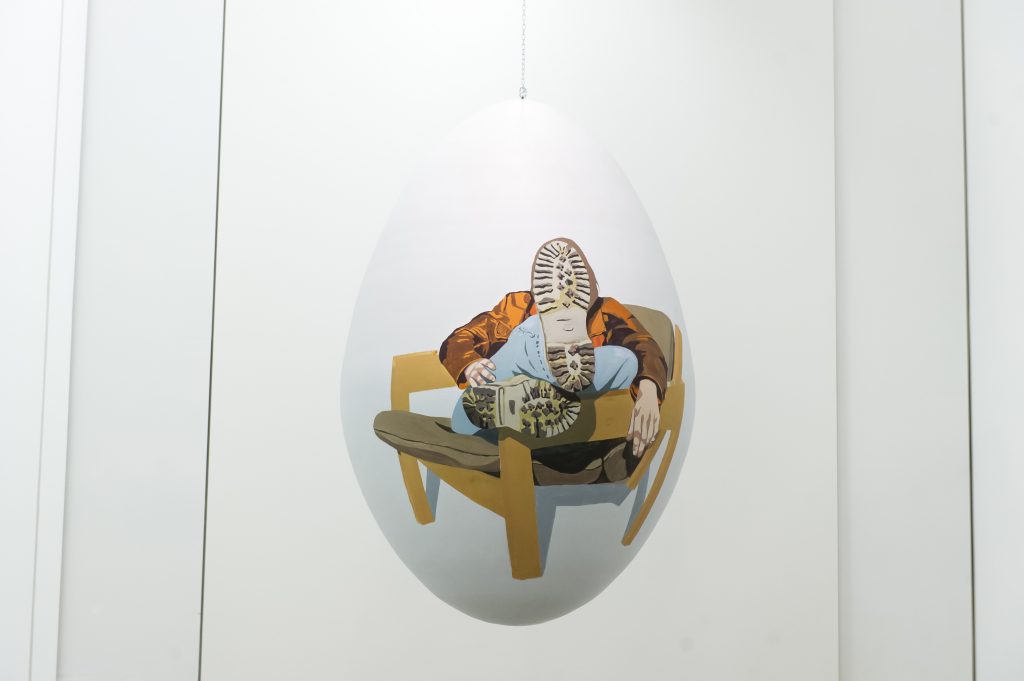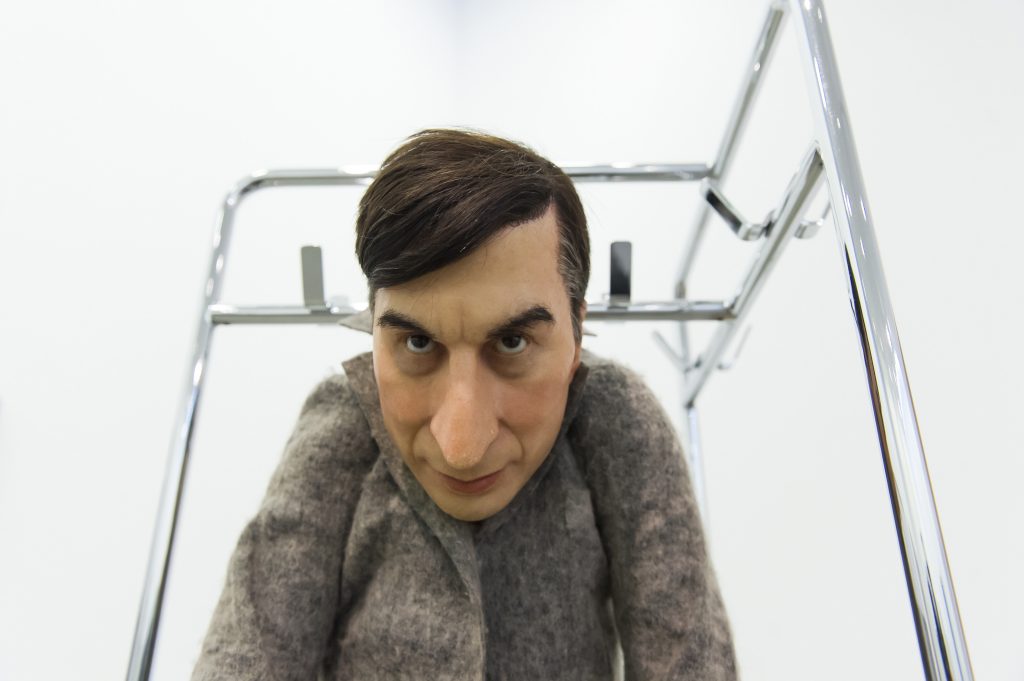
Giorgio Galotti: We decided to start this new section on art collection with your interview since I have followed your trajectory from the beginning. I know some of the works you acquired, and I am familiar with your affection for the suicidal squirrel of Cattelan’s work “Bidibidobidiboo.” However, I don’t know which work actually started your collection – the work that generally initiates the most immediate desire to be a collector, that is, the idea of possessing it. Could you tell me more about it?
Patrizia Sandretto Re Rebaudengo: It was Blood Stone, a sculpture by Anish Kapoor from 1988. It was not the first work I acquired, but it is the one I recognize as the starting point of my personal path as a collector. I started looking at the Italian neo-avant-garde, following the model of the great Arte Povera and conceptual art collectors from Turin, but I realized almost immediately that this would not be my path. I wanted the collection to be an instrument of exploration, study, and discovery. I did not care to imitate a tradition, mirroring a history of art that was already drawn. I then looked at artists from younger generations, seeking to get in touch with creators and works that could strike me, astonish me, and catch me off guard. The dialogue with the artists, met in the heart of their workspace, is one of the collection’s elements of imprinting, and Anish Kapoor is actually one of the first artists with whom I discussed and reasoned in his London studio among the sculptures. It was in 1992. Immediately after that meeting, I visited Lisson Gallery and bought Blood Stone, which is a sculpture made up of two large limestone rocks. In my mind the material level intertwines with the symbolic one: It is the “first stone” of the collection, a solid foundation on which I could build a structure. The two small circles filled with very dark pigment that appear on their surface are a bit like abysmal openings: I associate them with the courage required to face what is still unknown and, at the same time, with depth, one of the qualities that interest me in contemporary art.
GG: As president of a foundation, I imagine that the process of acquiring works has evolved over time, especially as regards the possibility of commissioning a new work rather than acquiring something that already exists. What interests you the most in this process?
PSRR: It has been 25 years since the first acquisitions. I can say that art, through the collection and then through the foundation, has made me grow and has changed me. What didn’t change are some of the rules I have observed from the beginning: to deepen the research and the path of the artist, to buy the works through the gallery, one of the main actors of the art system, which I have always recognized as having a fundamental role.
Production, as you rightly observed, is a process. In my case it is a process born of a direct relationship with artists and a knowledge of their projects, from the ideational stages. I have always acknowledged the importance of supporting them, investing resources so that their ideas can be translated into works. Production is one of the tools to give concrete support to artists, one of the main statutory missions of the Fondazione Sandretto Re Rebaudengo, which I created in 1995.

Paola Pivi, ‘Have you seen me before?’, 2008
left: Anish Kapoor, ‘Blood Stone’, 1992.
Courtesy Fondazione Sandretto Re Rebaudengo
GG: If I am not mistaken, part of your collection is dedicated to works created by women. Over the last few years, we’ve been noticing a particular attention given to the female creative process – sometimes we face exhibition projects that highlight the existence of women in art. Do you think there is a need to affirm the role of women in this area as well?
PSRR: The search for women artists was one of the threads that structured the collection when I started. Along with English art, the Los Angeles scene, and photography, it was one of the fields on which I focused my interests, one of the lines I followed to organize my itinerary. It’s a theme that still persists now that my collection is geared towards a maximum opening, beyond any predefined address.
In 1996 Ida Gianelli, then director of the Castle of Rivoli, invited me to the Collezionismo a Torino exhibition (with me were Gemma De Angelis Testa, Eliana Guglielmi, Corrado Levi, Marcello Levi, and Marco Rivetti), I decided to present a room with women artists only, among them, Vanessa Beecroft, Mona Hatoum, Jenny Holzer, Eva Marisaldi, Cindy Sherman, and Rosemarie Trockel.
A few years later, when I had already opened the Fondazione Sandretto Re Rebaudengo, we devoted the program of an entire year – 2004 – to women: exhibitions (one of them dedicated to the Turin-born artist Carol Rama, who later on was awarded a Golden Lion for Career Achievement in Venice), events, publications, and talks that offered a broad and updated view of women’s art and culture.
Yes, I think specific attention to the art of women continues to be necessary, and I believe this should happen both through the reinterpretation of the past (only in appearance devoid of female protagonists) and in the present: Echoing the title of a beautiful exhibition curated by Lea Vergine in Milan in 1980, we should not forget that women artists represent “The other half of avant-garde.”

Courtesy Fondazione Sandretto Re Rebaudengo.
GG: The idea of collecting has evolved a lot since the ‘90s. It is often preferred to buy works from an artist who is more protected by the system rather than to buy something you instinctively like, thus curbing the collector’s genuine impulse. What do you think about that?
PSRR: I have always collected works and not names. I bought works like The Acquired Inability to Escape (Inverted and Divided) by Damien Hirst, and Ninna nanna and Bidibidobidiboo (the suicidal squirrel) by Maurizio Cattelan in the early nineties. They were not celebrities, but I was already sure that they were extraordinary artists, well-advanced at the start of their careers. I don’t see myself as a talent scout (a role I attribute mostly to galleries and curators), and I generally do not turn to beginners; this is why, when young artists interest me, I devote a lot of care and attention to their trajectory and education, to the exhibitions in which they participated, to the curators and other artists with whom they are in contact, to the galleries with whom they work.
By character I am not an impulsive person, but I try to be totally free when I choose a work.
GG: Art addicts mostly travel or move, because of events related to art, near inauguration of exhibitions or fairs, and try to align their leisure travels with these moments. What is the role of art in your private life?
PSRR: It is the thread that interlaces – or rather embroiders – both my public and private life. Art has given me a special vision of the world, a closer, eccentric, and, I believe, nonstereotypical look at its cultures. Artists, works, exhibitions, and certainly major international events and fairs determine my geography and build relationships, friendships, and relations of respect that link me to many people whom art has given me the opportunity to know.
GG: What is your opinion about the exponential increase in contemporary art events, especially in relation to fairs? Do you think this system is reaching a level of saturation, or is it necessary to have so many artistic offerings?
PSRR: Fairs fulfill the traditional functions of collecting and marketing and, on the other hand, also respond to the very current trend of the monothematic event: short, intense, and concentrated into a few days. To a certain extent, fairs have a format similar to that of literature, economics, philosophy, and poetry festivals, also appreciated by the general public. For the insiders, fairs continue to be very important events: Each person, according to roles and interests, has a choice among very rich and articulated offerings. I visit many art fairs, and I am happy that my city, Turin, has one of undeniable value – Artissima – the first fair to have chosen many years ago to be exclusively devoted to contemporary art.

right: Vanessa Beecroft, Senza Titolo, 1975
left: Damien Hirst, ‘Love is Great’, 1994
Courtesy Fondazione Sandretto Re Rebaudengo
GG: The web has now entered our private lives in every way. Have you ever used the internet to contact an artist or to buy one of his or her works?
PSRR: Yes, certainly. I use the web every day to gather information, or to prepare a visit to an artist or to an exhibition I want to attend. I try to use and integrate all the tools and methods available, both virtual and real. The web is now part of our system of knowledge. I am very attached to personal relationships with artists and to the physical space of the exhibition, the place of live contact between public and the work, but I am also very interested in new solutions. I look with great interest at the development of Artuner (www.artuner.com), a project created by my son Eugenio Re Rebaudengo in 2013, which is an articulated platform that organizes projects with international artists, producing new works that are sold online or in pop up shows throughout the world.

Courtesy Fondazione Sandretto Re Rebaudengo.
GG: We live in an image-saturated society. Through the internet it is possible to see the layout or the works of an exhibition through a screen. In your opinion, what is the role of platforms like ours? Do you think they are useful, or do you think the art system needs the physical relationship between viewer and artwork in any case?
PSRR: I really appreciate your initiative. I like it because it is the outcome of a collaborative and reticular project and because it is the result of specialized and differentiated skills. I think that an interactive cultural map like yours is a useful tool, ready to use during our travels and visits around the world. Beyond its practical nature, it also provides photography and useful information and data to understand and analyze the current international art system. It is a tool made to ramify, and I wish it can grow exponentially. Good luck with your work!
GG: What is your most recent acquisition?
PSRR: The work WeltenLinie by Alicja Kwade, which was commissioned by the Fondazione Sandretto Re Rebaudengo, as donor of the 57th International Art Exhibition – Biennale di Venezia, curated by Christine Macel.
GG: I know that this is not a politically correct question, but would you like to share with us some names of emerging artists who interest you or whom you recommend to follow?
PSRR: No secrets. Many artists who interest me are among those we host at Fondazione Sandretto Re Rebaudengo, in collective and solo exhibitions. Among the many I would like to recommend Katja Novitskova, Josh Kline, Patrizio Di Massimo, Paul Kneale, Ian Cheng, and Ed Atkins.
Interview by Giorgio Galotti
Translated by John Bez
